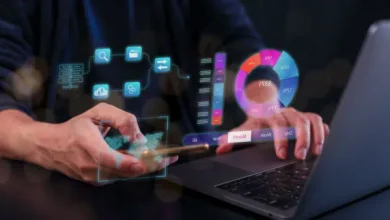Blockchain and Intellectual Property Rights

Introduction
In the digital age, where information is invaluable, protecting intellectual property rights has become a paramount concern. Blockchain technology, initially designed to underpin cryptocurrencies, has emerged as a revolutionary force in safeguarding and managing intellectual property rights. This article explores the intersection of blockchain and intellectual property, highlighting the transformative impact of decentralized ledgers on the protection and enforcement of creative endeavors.
Understanding Blockchain Technology
Before delving into its impact on intellectual property, a fundamental understanding of blockchain is essential. Blockchain is a decentralized and distributed ledger that records transactions across a network of computers in a secure and transparent manner. Each block in the chain contains a timestamped record of transactions, creating an immutable and tamper-proof record.
Enhancing Transparency and Traceability
One of the key challenges in intellectual property management is establishing the provenance of creative works. Blockchain addresses this by providing an immutable record of ownership and the entire chain of custody for intellectual property. Artists, writers, musicians, and creators of all kinds can benefit from the transparency and traceability that blockchain offers, ensuring that the origin and ownership of their work are indisputable.
Smart Contracts for Automated Protection
Smart contracts, self-executing contracts with the terms directly written into code, play a pivotal role in the realm of intellectual property on the blockchain. These contracts automate the enforcement of intellectual property rights, ensuring that creators are fairly compensated for the use of their work. Smart contracts facilitate a trustless environment where transactions occur automatically when predefined conditions are met, reducing the need for intermediaries and minimizing the risk of infringement.
Preventing Counterfeiting and Piracy
Counterfeiting and piracy pose significant threats to intellectual property rights, leading to revenue loss for creators. Blockchain’s decentralized nature and cryptographic security features make it a potent tool in the fight against these issues. By recording the ownership and authenticity of creative works on an unalterable ledger, blockchain acts as a deterrent to counterfeiters and pirates, as well as providing a means for consumers to verify the legitimacy of the products they purchase.
Tokenization of Intellectual Property
Blockchain introduces the concept of tokenization, wherein intellectual property assets are represented as digital tokens on the blockchain. This allows for the fractional ownership of creative works, enabling creators to monetize their work more flexibly. Moreover, it opens up new avenues for crowdfunding and investment in intellectual property, democratizing the creative economy by allowing a broader audience to participate in and support creative endeavors.
Global Collaboration and Licensing
Blockchain facilitates global collaboration and licensing in the realm of intellectual property. Smart contracts can automate the licensing process, ensuring that creators receive timely and accurate compensation for the use of their work across borders. The decentralized nature of blockchain eliminates the need for intermediaries, streamlining the licensing process and reducing administrative overhead.
Challenges and Considerations
While the integration of blockchain and intellectual property holds immense promise, challenges and considerations must be addressed. These include legal frameworks, standardization of practices, and ensuring accessibility for all creators. The evolving nature of technology requires a collaborative effort between legal experts, technologists, and creators to establish a robust foundation for the intersection of blockchain and intellectual property.
Future Landscape of Intellectual Property Rights
In conclusion, the marriage of blockchain technology and intellectual property rights heralds a new era of security, transparency, and efficiency. From preventing piracy to enabling global collaboration, blockchain’s impact on intellectual property is multifaceted. As the technology continues to evolve and legal frameworks adapt, the future landscape of intellectual property rights promises to be more equitable, accessible, and supportive of the creative endeavors that shape our cultural landscape.
FAQs
How does blockchain enhance transparency in intellectual property management?
Blockchain enhances transparency by providing an immutable record of ownership and the entire chain of custody for intellectual property, ensuring indisputable provenance.
What are smart contracts, and how do they relate to intellectual property on the blockchain?
Smart contracts are self-executing contracts with terms written into code. They automate the enforcement of intellectual property rights on the blockchain, ensuring fair compensation for creators.
How does blockchain help prevent counterfeiting and piracy of intellectual property?
Blockchain’s decentralized nature and cryptographic security features act as deterrents to counterfeiting and piracy by recording ownership and authenticity on an unalterable ledger.









